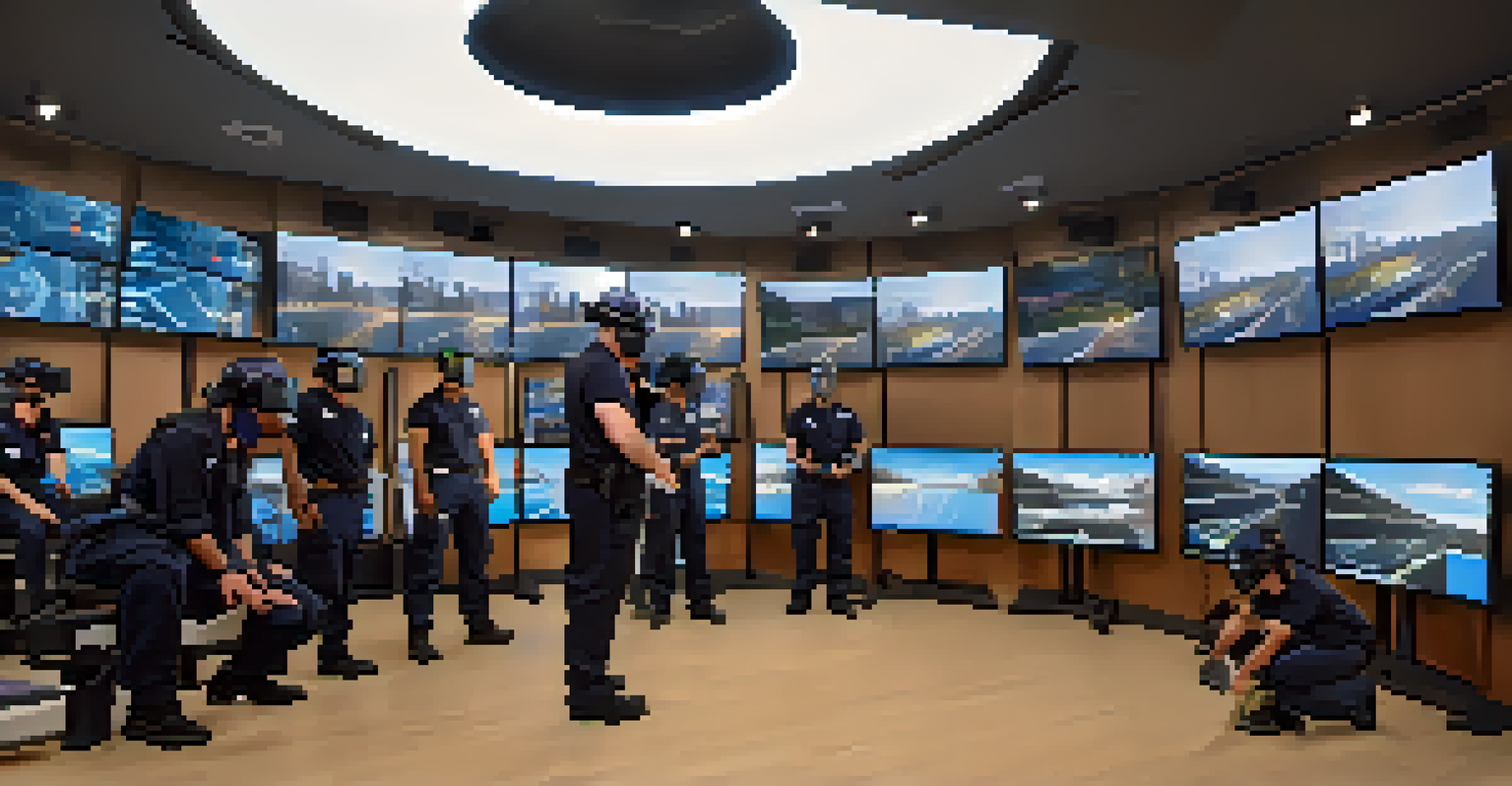Training NYC Responders for Effective Crisis Management

Understanding the Importance of Crisis Management Training
Crisis management is a critical skill for responders in any urban environment, especially in a bustling city like New York. The unpredictable nature of crises—from natural disasters to public health emergencies—demands that responders are well-prepared. Training equips them with the tools to act decisively and efficiently, ensuring public safety and minimizing chaos during emergencies.
Crisis management is not just about responding to disasters; it's also about preparing for them and learning from every situation.
Moreover, effective training helps build the confidence of responders. When they know they’ve been equipped with the right skills and knowledge, they can approach situations with a clear mind and a focused strategy. This confidence is crucial, as it not only affects their performance but also reassures the community they serve.
In addition to technical skills, training fosters teamwork and communication among responders. In a crisis, every second counts, and having a cohesive team that understands each other’s roles can make all the difference. By prioritizing training, NYC ensures that its responders can work seamlessly together under pressure.
Key Elements of Effective Training Programs
Effective training programs for crisis management should include realistic simulations and exercises. These hands-on activities allow responders to practice their skills in a controlled environment, mirroring real-life scenarios they might face. For instance, conducting drills that simulate a subway emergency can prepare teams for the fast-paced decision-making needed in actual situations.

Another vital element is ongoing education and skills refreshment. Crisis management is an ever-evolving field, with new techniques and technologies emerging regularly. By implementing continuous training, responders can stay current with the latest practices, ensuring they are always ready to respond effectively.
Crisis Management Training Essentials
Effective training programs equip responders with necessary skills, build confidence, and enhance teamwork.
Lastly, feedback and evaluation are crucial components of any training program. After exercises, responders should engage in debriefing sessions to discuss what went well and identify areas for improvement. This reflective practice not only enhances individual performance but also contributes to the overall effectiveness of the team.
The Role of Technology in Training NYC Responders
Technology plays an increasingly significant role in crisis management training. Virtual reality (VR) and augmented reality (AR) technologies can create immersive training experiences that resemble real-life emergencies. This innovative approach allows responders to experience high-pressure situations without the risks associated with live drills.
In the midst of chaos, there is also opportunity.
Additionally, online training modules offer flexibility for responders to learn at their own pace. These modules can cover a wide range of topics, from emergency protocols to mental health support strategies. This flexibility is especially beneficial in a city like NYC, where responders may have irregular schedules.
Moreover, technology facilitates better communication and coordination during training sessions. Mobile apps and communication platforms can streamline information sharing among team members, ensuring everyone stays informed and connected, even in the midst of a crisis.
Collaboration with Community Organizations
Training NYC responders is not just an internal affair; collaboration with community organizations is essential. Engaging with local nonprofits and community groups can provide valuable insights into the unique challenges faced by different neighborhoods. This collaboration helps responders understand the community dynamics they are working within.
Involving community organizations in training exercises can also create a sense of trust and cooperation. When responders practice scenarios with community members, it fosters relationships that can be beneficial during real emergencies. This connection can enhance communication and lead to more effective responses when crises occur.
Technology Enhances Training Methods
Innovative tools like VR and online modules offer flexible, immersive learning experiences for responders.
Additionally, community organizations can offer specialized training on cultural competence and sensitivity. This aspect is particularly important in a diverse city like New York, where understanding various cultural backgrounds can improve interactions between responders and the public during a crisis.
Mental Health Training for Responders
Crisis management takes a toll on the mental health of responders, making mental health training a critical component of their preparation. Programs focusing on stress management and resilience can help responders cope with the emotional challenges they face. This training is essential for maintaining their well-being and ensuring they can perform effectively during crises.
Moreover, mental health training can reduce the stigma around seeking help. By promoting open discussions about mental health, organizations can encourage responders to talk about their experiences and seek support when needed. This proactive approach leads to a healthier workforce capable of managing high-pressure situations.
Additionally, peer support programs can be integrated into mental health training. These programs allow responders to connect with each other and share coping strategies, creating a community of support that extends beyond training sessions. This camaraderie can be invaluable during tough times.
Evaluating the Effectiveness of Training Programs
To ensure that crisis management training is effective, evaluation is essential. Organizations should implement metrics to assess the knowledge and skills gained by responders after training sessions. This data can guide future training initiatives and help identify areas that may require more focus.
Feedback from responders themselves is another crucial element in evaluating training effectiveness. Their perspectives can highlight what's working and what needs improvement, allowing for a more tailored approach to future training. Involving responders in this evaluation process fosters a culture of continuous improvement.
Collaboration Strengthens Community Bonds
Engaging with community organizations fosters trust and improves responders' understanding of diverse neighborhood dynamics.
Additionally, real-world application of skills learned during training can serve as a benchmark for effectiveness. Tracking how well responders perform during actual crises can provide insights into the success of the training programs. This real-time feedback loop is invaluable for refining and enhancing training initiatives.
The Future of Crisis Management Training in NYC
As New York City continues to evolve, so too will the training needs of its responders. The future of crisis management training is likely to embrace more advanced technologies and methodologies. Innovations such as artificial intelligence (AI) and machine learning may play a role in personalizing training experiences and predicting potential crisis scenarios.
Moreover, as the city faces new challenges—be it climate change, health crises, or social unrest—training programs must adapt accordingly. Staying ahead of these trends ensures that responders are prepared for whatever comes their way. Continuous adaptation is key to maintaining effective crisis management.

Finally, fostering partnerships with educational institutions can enhance training programs. Collaborating with universities and research organizations can provide access to cutting-edge research and resources, further enriching the training experience for NYC responders.